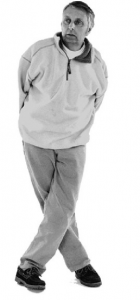Do you ever have that weird thing happen where you stand up and get dizzy? A lot of people think it’s because they stood up too fast. But it’s really more a function of your blood flow.
When you sit for a while, gravity causes blood to pool in your legs and feet. Then, when you stand up, more blood flows downward, and you briefly have a reduced amount of blood available to your heart and upper body. So it’s basically a form of low blood pressure that happens when you stand up.
It’s not uncommon. There’s even an official name for it. It’s called “orthostatic hypotension.”
If it’s an occasional issue, it’s probably not a problem. Relatively infrequent dizziness upon standing could be triggered because you’re dehydrated, which reduces your blood volume. Low blood sugar or being overly hot can also trigger it.
If it happens to you a lot, it could be because of an underlying condition – or maybe because of some of the medications you’re taking.
More specifically, health conditions such as heart disease, diabetes, thyroid issues or neurological conditions like Parkinson’s or dementia may be at the root of the problem. Diuretics, blood pressure drugs, beta blockers, antidepressants and drugs used for erectile dysfunction can all contribute to the severity of orthostatic hypertension.
As a matter of fact, my Dad was on the alpha-blocker Flomax for a while. When he got up to go to the bathroom one night, he became so lightheaded that he passed out and cracked his head on the floor. And that’s never a good thing. But I’ve similar stories from any number of men on the drug.
Thankfully, there are a few things you can do to get your blood flowing more quickly to your heart when you stand up.
Stop Dizziness – Prime Your Body Before Standing
It turns out if you “prime the pump” before standing, it can make all the difference when it comes to dizziness.
As you prepare to stand, take several very deep breaths. Just slowly inhale through your nose for a count of four, and hold it for a count of seven. Then exhale through pursed, rounded lips for a count of eight. Do this several times.
Next, start raising your legs like you are marching in place while seated. Do this for 30 seconds or so prior to standing. Then, do a few few leg crosses. Just cross your left ankle over our right knee for several moments, then repeat with the right ankle over the left knee.
Finally, stand up slowly and tense up your lower limbs by crossing your legs while clenching the muscles in your butt and thighs. This will help push the blood into your upper body.

It only takes about two minutes, and could easily prevent a fall.
Get Checked Out for Underlying Conditions
If you frequently experience dizziness, blurred vision or light-headedness when standing, I recommended bringing it to the attention of your physician. It may due to a health condition you are unaware of, or one of the medications you are taking.
In the event you feel as though you will faint after standing, sit back down immediately and place your head between your knees (crash position) until you recover.
In the meantime, eat regularly scheduled healthy meals to keep your blood sugar up, and stay hydrated. Water keeps your blood from getting too thick so it can flow more easily to your heart and brain.
SOURCES:
Figueroa JJ, Basford JR, Low PA. Preventing and treating orthostatic hypotension: As easy as A, B, C. Cleve Clin J Med. 2010;77(5):298-306.
Sheikh NA, Ranada S, Lloyd M, McCarthy D, Kogut K, Bourne KM, Jorge JG, Lei LY, Sheldon RS, Exner DV, Phillips AA, Runté M, Raj SR. Lower body muscle preactivation and tensing mitigate symptoms of initial orthostatic hypotension in young females. Heart Rhythm. 2022 Apr;19(4):604-610. Wieling W, van Dijk N, Thijs RD, de Lange FJ, Krediet CT, Halliwill JR. Physical countermeasures to increase orthostatic tolerance. J Intern Med. 2015 Jan;277(1):69-82.
PHOTO SOURCE: J Intern Med. 2015 Jan;277(1):69-82.



